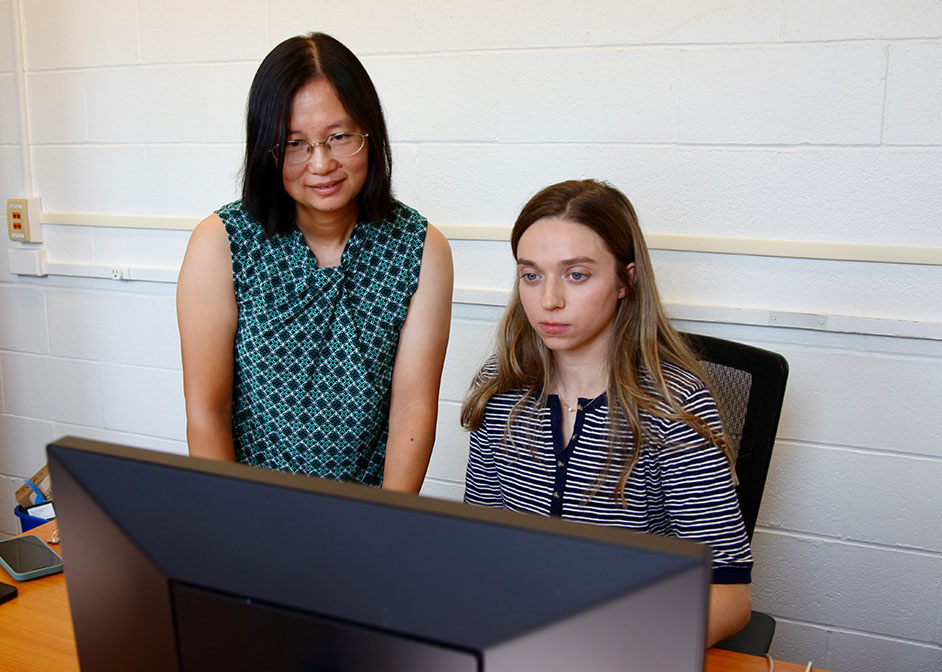Doctoral Student Laying Groundwork for Future Studies on Impact of Hurricanes on Air Pollution
Tabitha Lee, a University of Houston atmospheric science doctoral student, studied Hurricane Ida’s impact on atmospheric composition based on changes in nitrogen dioxide (NO2) emissions. Lee’s work, published recently in Environmental Science & Technology Letters, shows how satellites can be used to detect NO2 emissions while gaining a better understanding of how it impacts the environment.

According to Lee, NO2 is a forerunner to ozone.
Presenting a Challenge
Lee, who is first author of the study, worked with her advisor in the Department of Earth and Atmospheric Sciences, associate professor of atmospheric chemistry Yuxuan Wang. They studied satellite images taken just before and right after the hurricane made landfall in Louisiana on Aug. 29, 2021.
Wang said this is one of the first studies to use satellites to measure the disruption of brief and extreme weather events, like hurricanes, on the chemical composition of the atmosphere.
“The study presented a unique challenge,” said Wang, who is a member of the UH College of Natural Sciences and Mathematics faculty. “Not only did we compare the satellite data difference between those two periods, but we also had to understand how actual emissions change.”

Lee used data gathered from NASA’s TROPOspheric Monitoring Instrument satellite before and after Hurricane Ida affected the region. She has also identified and quantified previously unreported NO2 hotspots in other areas using the same method. The new satellite provides higher resolution images which allow for the detection of potential new emission sources that can impact ozone levels.
“To quantify the emissions, we removed lower NO2 values to look at the main plume that the sources are emitting,” Lee said. “The removal of lower concentrations of NO2 in the readings allowed us to analyze this complex region with many human-driven NO2 sources.”
To fund her research, Lee received a Future Investigators in NASA Earth and Space Science and Technology grant of $112,500 for three years.
Satellite Advantage
Satellites offer an advantage over traditional monitoring sites on the ground.
When ground-based monitoring sites are out of service due to a power outage from a storm, satellites can continue to monitor NO2 emissions. The only exception to this would be when the storm is directly above the site as clouds and high winds hamper measurements taken by satellites.
Lee chose Hurricane Ida as the focus of her study because of the size of the storm, the concentrated number of industrial plants in the region, and the power outages that resulted from the storm.
“It gave us a good opportunity to see the changes brought to the region based on human-created emissions from plants as well as local shipping ports,” Lee said.
According to Wang, another warning sign prompted attention to the southeastern Louisiana region.
“When we heard that ships bound for Louisiana were being diverted to Houston as part of storm preparations, we knew it was our time to act,” Wang said.
After the Storm
A notable observation took place in the days following the storm. On one particular day, satellite observations revealed massive amounts of NO2 over the areas of Baton Rouge and New Orleans.
“We believe the most plausible reason behind this finding was the recovery actions
following the destruction of Hurricane Ida, specifically the use of shipping barges
to distribute fuel to the hardest-hit regions,” Wang said.
- Chris Guillory, College of Natural Sciences and Mathematics